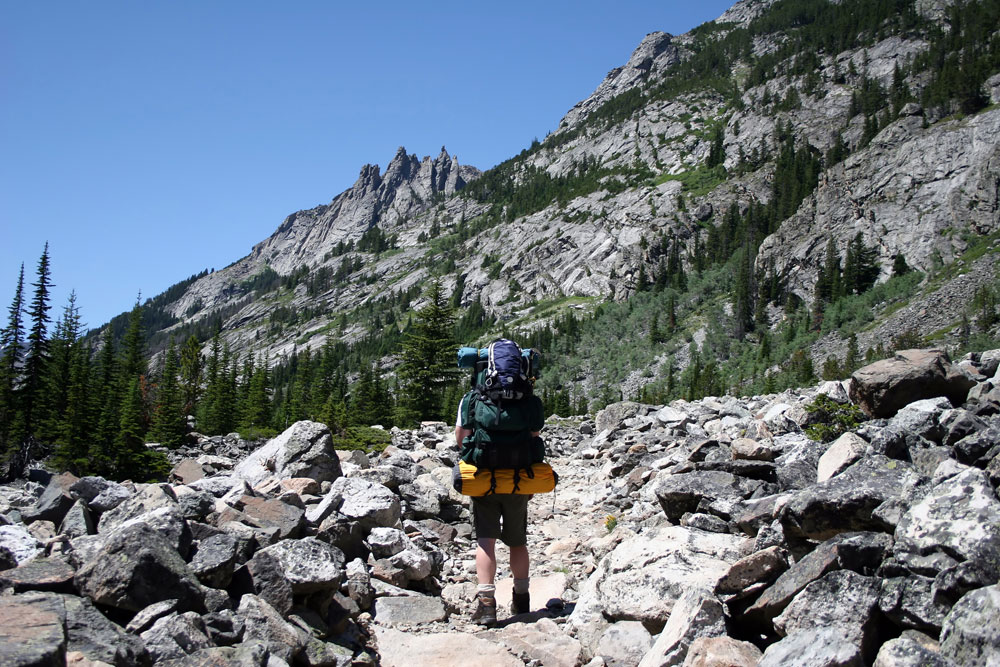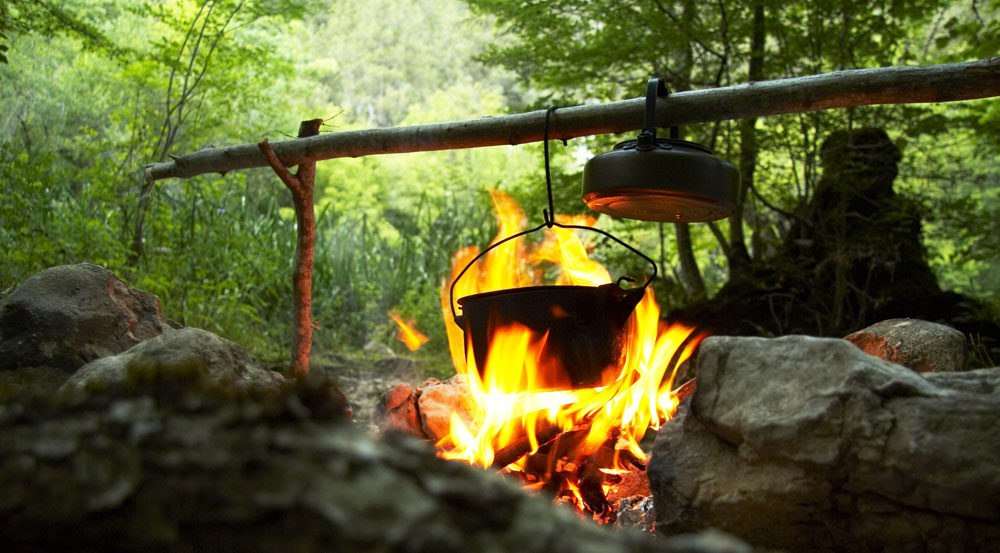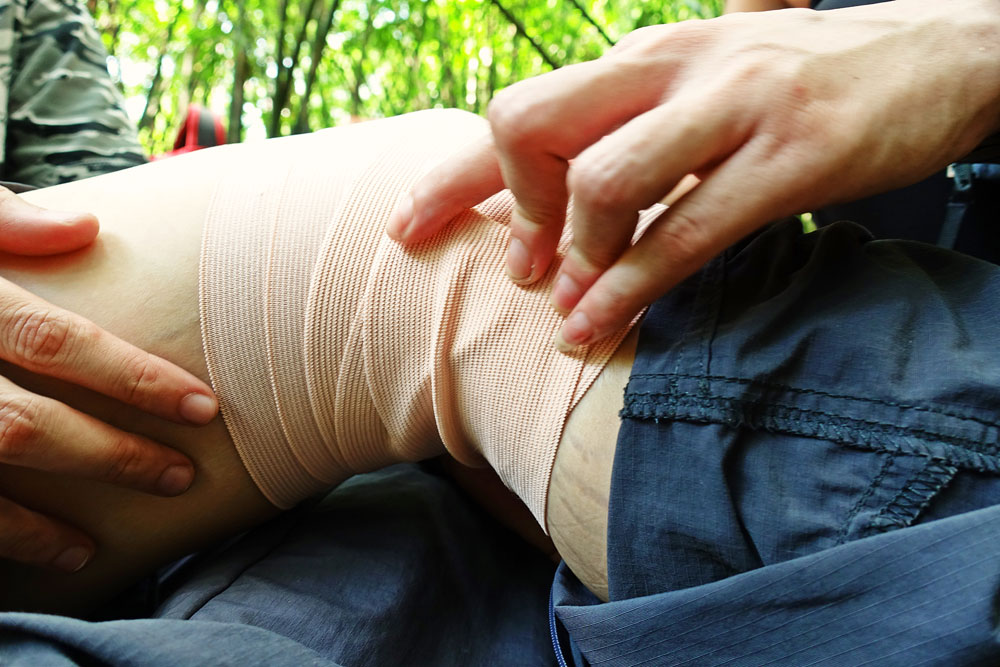
Whether you’re hunting, fishing, backpacking, or camping, venturing out into the wilderness means you’re likely going to encounter some mishap along the way. Injuries, such as bites, bone fractures, burns, and bleeding, are common out in the backcountry. When you’re out in the wilderness, miles away from the nearest hospital or good cell phone reception, it’s important to be prepared in the event of an injury.
But being prepared is about more than just having access to the right equipment—it’s important that you learn techniques for keeping yourself and others safe. In this article, we’ll discuss what essentials to pack in your first aid kit, basic rules for administering first aid to an injured member of your group or to yourself, and how to treat a variety of injuries that are common to the outdoors.
What to Pack in Your First Aid Kit
When it comes to being out in the wilderness, hours away from the nearest treatment center, carrying a first aid kit is just common sense. Having the right tools is just as necessary as knowing how to administer first aid. Here are a few essential items to include in your first aid kit that will help save your life while you wait for rescue:
- Wound dressings – Lacerations, puncture wounds, and gunshot wounds are some of the most common injuries that occur outdoors, particularly for hunters. Make sure your first aid kit includes bandages, gauze, adhesive tape, and other wound dressings to help stop bleeding.
- Antiseptic wipes – Bring antiseptic wipes to clean and disinfect hands before touching open wounds to prevent infection.
- Over-the-counter medication – Pack a few packets of your preferred over-the-counter pain relief medication.
- Antibiotic ointment – In the event of a burn, cut, scrape or another wound, antibiotic ointment is essential for treating and preventing infection.
- Cream for bites and stings – When you’re outdoors, bites and stings are practically inevitable. A bite cream with a local anesthetic will help with itching.
- Scissors and tweezers – A pair of small scissors will be helpful in the event you need to cut away fabric to treat an injury; a pair of tweezers can be used to remove small splinters.
First Aid for Common Injuries
Burns

Burns are a common risk in the wilderness, especially for those who are camping and likely to be handling fire and boiling water. If you or someone in your group is burned, soak the area in clean, cold water to clean the wound and stop the burn. Then, cover the area with burn gel and antibiotic ointment and wrap with gauze or a clean piece of clothing to protect the burn site until you are able to go to a hospital for medical treatment. Use an over-the-counter painkiller to help reduce any pain, and elevate the area to keep swelling down.
Bleeding and infections
The first step in treating a serious wound is to stop the bleeding. Losing too much blood is very dangerous and could result in shock. The best way to stop the bleeding is by applying direct pressure to the wounded area and keeping it above the heart. If you are performing first aid on another person, make sure your hands have been disinfected and that you put on gloves before you touch their blood.
Everyone knows that good wound care is all about preventing infection. Once the bleeding is under control, you will need to take steps to make sure the wounded area doesn’t become infected. Using clean water, wash the wounded area out thoroughly to flush out dirt and germs. Then, apply an antibiotic ointment to the area and wrap in a sterilized bandage. Check the wound several times a day and monitor it for any signs of infection, including warmth, redness, and swelling.
Fractures

In the event of a bone fracture, the best thing you can do until you can get to a hospital for proper medical care is to stop any bleeding and make a splint to prevent movement and further injury. Inflammation will cause the area to swell and become painful, so make sure to have painkillers on hand.
Bug and animal bites
Naturally, you will encounter bugs and animals in the backcountry. The best way to avoid insect and spider bites is to use bug repellant, wear protective clothing, and be mindful of your surroundings, but, unfortunately, this doesn’t always work. If you or someone in your group is bitten by an insect, apply a cream with a local anesthetic and antihistamines to prevent pain and itching. Look for signs of swelling or redness and watch for worsening symptoms.
In most cases, wild animals are more afraid of you than you are of them. As long as you don’t try to touch them, they are likely not going to just run up and bite you. However, if you do happen to get bitten, it’s important that you clean and bandage the wound and seek medical attention as soon as you can. If the animal that bit you was carrying rabies, you’ll need to be vaccinated. Similarly, if you were bitten by a venomous snake, clean the area thoroughly, try to restrict blood flow, and get to a hospital as soon as possible.
Take Away
Accidents happen, and a fun day out in the field can quickly turn into a very dangerous situation, but as long as you’re prepared and have some basic first aid knowledge and skills, you can help prevent injuries from worsening and even save someone’s life (including your own). In addition to following these tips, we also recommend you take a first aid course that specializes in wilderness first aid.



























